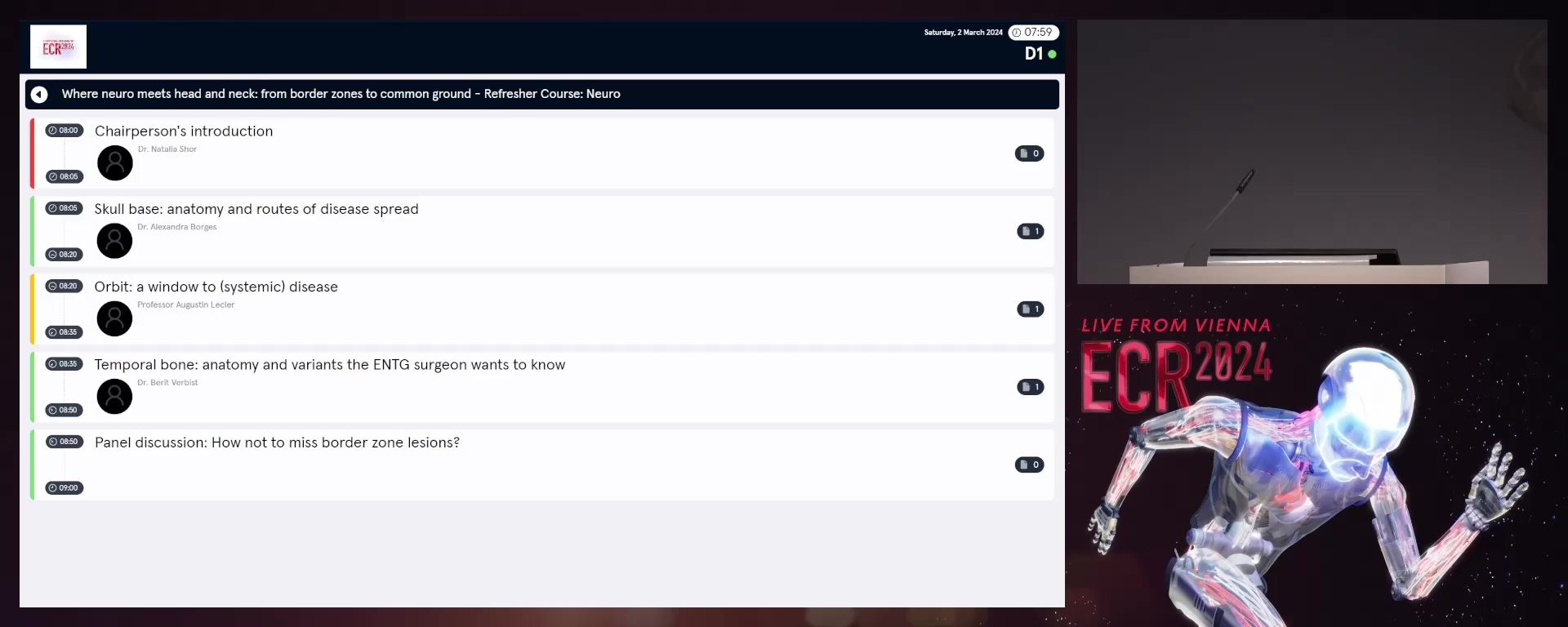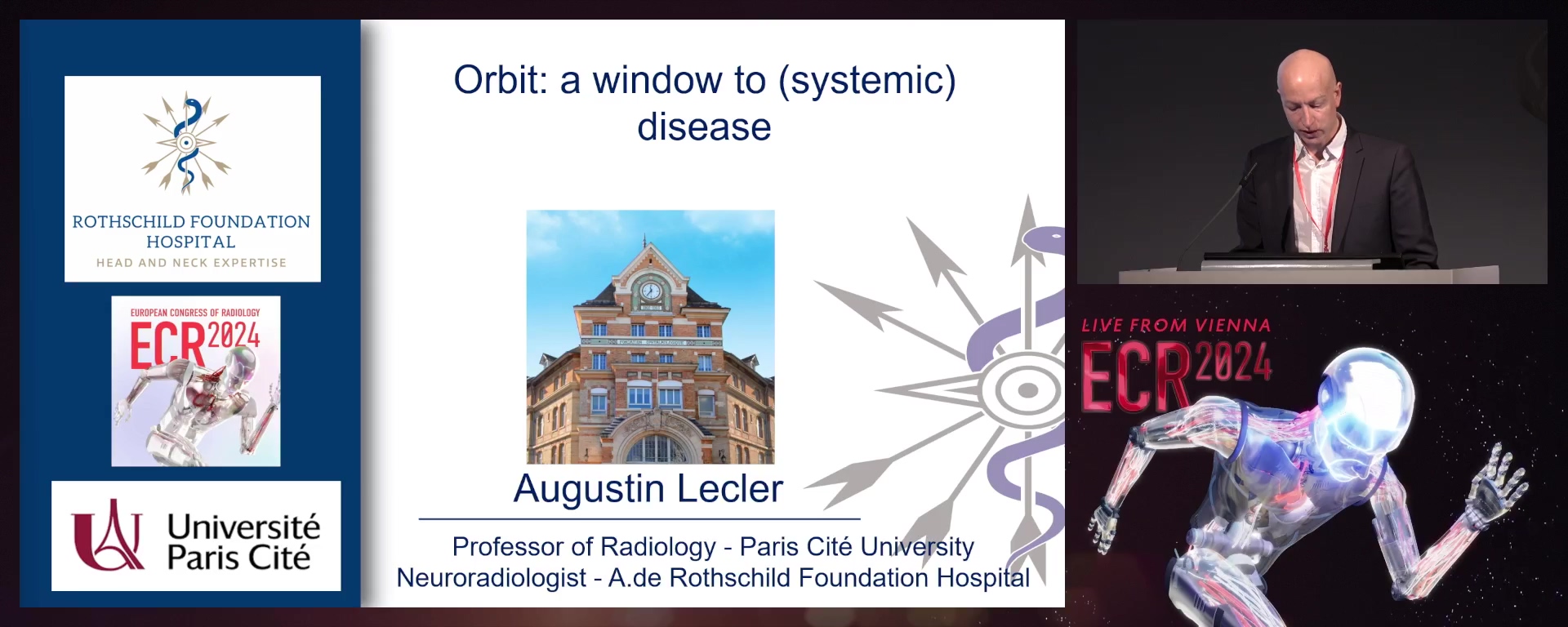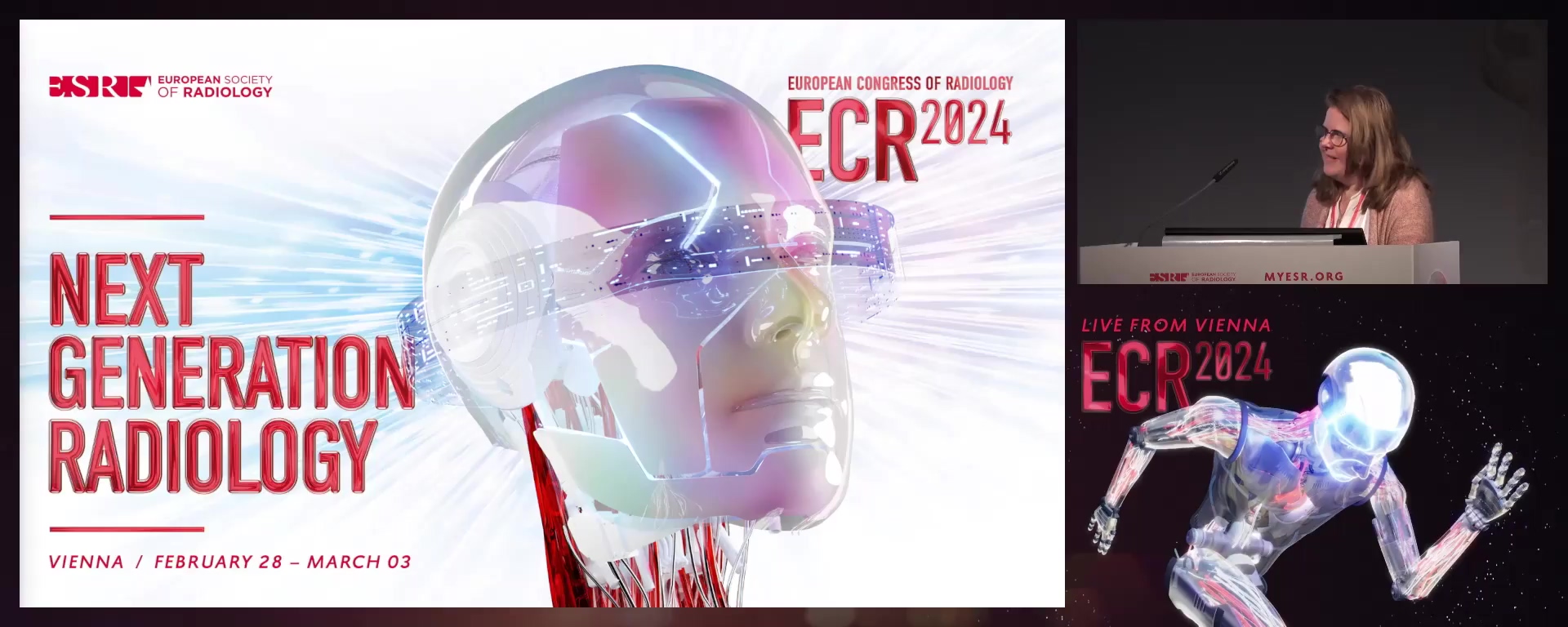Refresher Course: Neuro
RC 1711 - Where neuro meets head and neck: from border zones to common ground
5 min
Chairperson's introduction
Natalia Shor, Paris / France
15 min
Skull base: anatomy and routes of disease spread
Alexandra Borges, Lisbon / Portugal
1. To recognise the boundaries between the anterior, central and posterior skull base.
2. To describe the relationships between the suprahyoid neck spaces and the skull base.
3. To name and identify the main skull base neurovascular foramen.
4. To predict the potential routes of spread of suprahyoid neck lesions to the intracranial compartment.
2. To describe the relationships between the suprahyoid neck spaces and the skull base.
3. To name and identify the main skull base neurovascular foramen.
4. To predict the potential routes of spread of suprahyoid neck lesions to the intracranial compartment.
15 min
Orbit: a window to (systemic) disease
Augustin Lecler, Paris / France
1. To develop critical thinking skills to recognise and differentiate between various orbital manifestations related to systemic diseases.
2. To identify common orbital signs and symptoms that may indicate an underlying systemic disease.
3. To evaluate the diagnostic modalities and techniques used to investigate orbital involvement in systemic diseases.
2. To identify common orbital signs and symptoms that may indicate an underlying systemic disease.
3. To evaluate the diagnostic modalities and techniques used to investigate orbital involvement in systemic diseases.
15 min
Temporal bone: anatomy and variants the ENTG surgeon wants to know
Berit Verbist, Leiden / Netherlands
1. To name and identify bony, neural and vascular structures at risk for inadvertent injury during temporal bone surgery.
2. To list anatomical variants of the mastoid, facial nerve, sigmoid sinus and jugular bulb.
3. To describe surgical complications related to anatomical variants.
2. To list anatomical variants of the mastoid, facial nerve, sigmoid sinus and jugular bulb.
3. To describe surgical complications related to anatomical variants.
10 min
Panel discussion: How not to miss border zone lesions?




